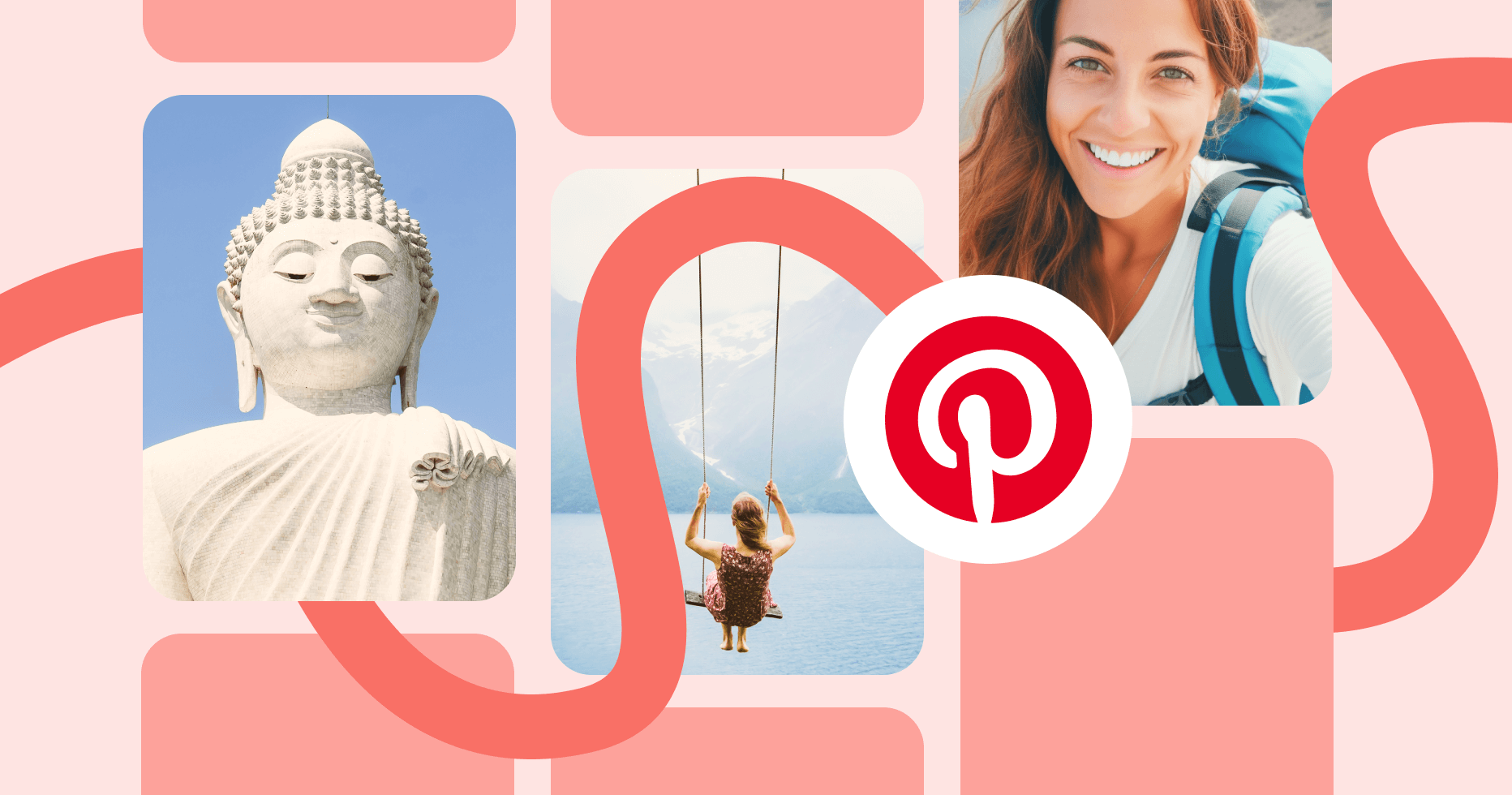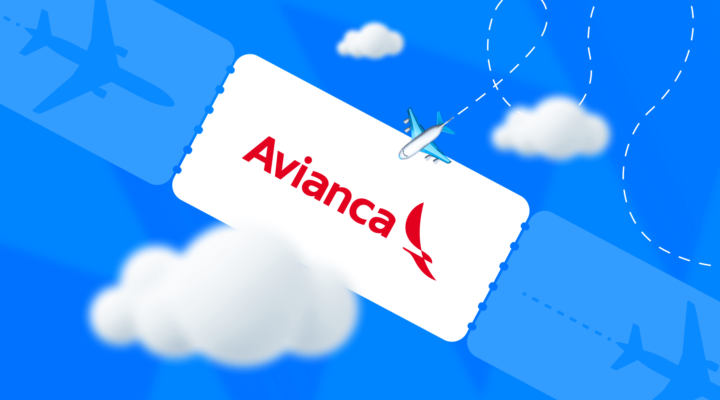How to Create a Pinterest Account
Ready to tap into Pinterest’s visual power and boost your blog’s traffic? Here’s a simple guide to creating a Pinterest account, starting with the basics.
Sign Up for a Free Business Pinterest Account
Creating a business account on Pinterest is a straightforward process designed to equip businesses with tools to increase visibility and drive site traffic.
Here’s a condensed guide on setting up your Pinterest business account:
- Create a New Business Account:
- Visit Pinterest’s business page and click ‘Sign up.’
- Enter your email, password, and age. Follow the prompts to input business details and preferences.
- If you want your business account to be distinct from any personal account, use a different email address not already associated with another Pinterest account.
- Link or Convert an Existing Personal Account:
- If you already have a personal Pinterest account and wish to link or convert it into a business account, Pinterest offers flexible options. Linking accounts allows you to manage both with the same email while converting changes the nature of your existing personal account to a business one, with all your content and followers intact.
Here are some Pinterest features and SMM tools you can use with your Pinterest business account:
- Pinterest Analytics: Essential for understanding the performance of your pins and audience preferences.
- Rich Pins: These provide more context about an idea by including extra information directly on the pin itself. Rich Pins are available in various forms, such as an app, product, recipe, or article, enhancing the content’s reach and user engagement.
- Pinterest Widget Builder: This tool integrates interactive Pinterest features like save buttons and pin widgets on your website. It makes it easier for visitors to engage with your Pinterest content directly from your site.
- Tailwind: This tool complements Pinterest by offering features such as automated pin scheduling, analytics beyond what Pinterest offers, and more effective management of multiple boards. It’s particularly useful for scaling up your Pinterest strategy without increasing the workload.
Fill Out an Account
Once you’ve set up your Pinterest business account, the next critical step is effectively filling out your account details. Properly completed profiles are more appealing to viewers and can significantly impact your visibility and engagement on the platform.
Here’s how to optimize each section of your Pinterest profile:
Profile Picture
Select an image that represents your travel blog—this could be your logo or a professional headshot if you are the face of your blog. Ensure the image is clear and visually appealing. Pinterest recommends using a square image (165 x 165 pixels recommended) to ensure it displays properly on all devices.
Username and Business Name
Choose a username that matches your travel blog’s name to maintain consistency across social media platforms. This username will also become part of your Pinterest profile’s URL.
Then, choose your business name. You can be more descriptive here. Include your full business name and also mention a key aspect of your service, like “Travel Wonders | Adventure & Leisure Tips.” This enhances discoverability.
Your Bio
Your bio should describe what your blog offers, such as unique insights into travel destinations, budget travel tips, luxury travel, etc. Use keywords related to your travel niche to improve your profile’s search visibility.
Also, consider including a call to action in your bio, such as “Follow us for the latest travel tips and destination guides.”
Claim Your Website
When you claim your site, any Pin that includes content from your site will feature your profile picture and a direct link back to your Pinterest profile, making it easier for Pinners to follow you and discover more of your content.
Here’s how claiming benefits you:
- Visibility: Your profile picture appears next to Pins from your site, increasing recognition.
- Direct Link: Pins link directly to your Pinterest profile, encouraging more followers.
- Follow Option: A follow button is included on Pins, simplifying how users can start following you.
To claim your website, you must own the domain and have the ability to edit its source code. Pinterest offers several methods to claim your site:
- HTML Tag: Adding a meta tag to your site’s header.
- Upload an HTML File: Placing a file in your site’s root directory.
- DNS TXT Record: Adding a record to your domain’s DNS settings.
Website Link
Don’t forget to link directly to your travel blog to drive traffic and enhance profile credibility.
If you have trouble setting up your Pinterest account or need more support on how to use Pinterest for blogging, there is a Pinterest blog and community help section that is at your disposal. Or you can contact Pinterest directly.
7 Tips for Driving Traffic to Your Travel Blog Using Pinterest
Now that we’ve covered how to set up your Pinterest blog, are you ready to start pinning? Here are some tips on how to use Pinterest to drive traffic to your travel blog.
Before we start, are you still on the fence? Let’s get you excited with the following quote:
Summer Williams, Pinterest For Bloggers (Instagram)
“Pinterest is absolutely invaluable for bloggers. With the right strategy in place and researched keywords, Pinterest can be one of the best sources of traffic for blogs! Would definitely recommend it.”

1. Be Strategic With Your Pinterest Boards for Effective Blogging
Refining the concept of a blog board on Pinterest can boost the effectiveness of driving traffic to your travel blog.
Instead of having a single board for all blog posts, consider creating multiple themed boards that align with specific aspects of your blog’s content. This strategy helps with discoverability and relevance for users interested in particular topics.
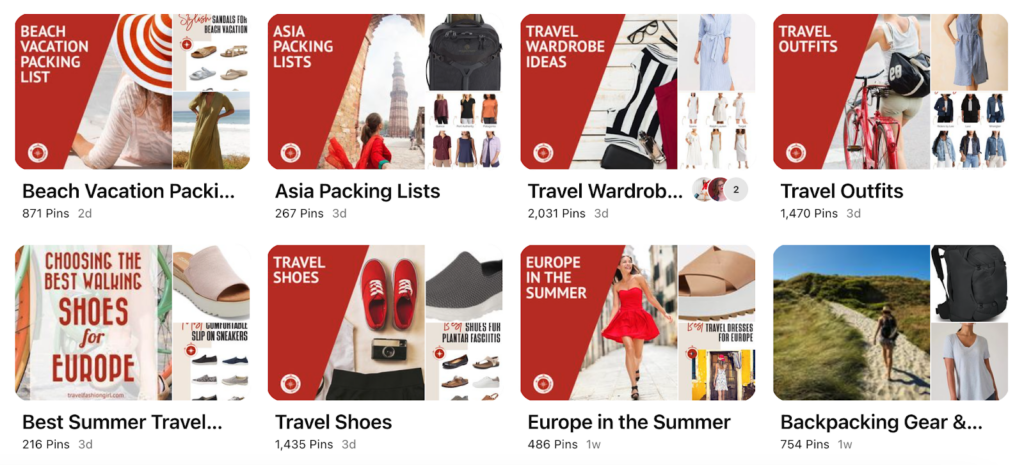
Here’s how to implement this:
- Segment by Categories or Destinations: For a travel blog focused on Mexico, for example, you might create separate boards for each major area or theme, such as “Food in Mexico,” “Beaches of Mexico,” or “Oaxaca Adventures.” Each board can then be filled with pins directly related to articles, reviews, and content specific to those themes.
- Create Comprehensive Boards: Each board should provide a comprehensive guide to a particular topic. For instance, the “Food in Mexico” board could include pins about popular dishes, restaurant reviews, food tours, and cooking tips specific to Mexican cuisine.
- Customize Board Descriptions: Use keywords in your board descriptions to improve SEO and explain what followers can expect to find on each board. A well-written description enhances visibility in Pinterest search results.
- Consistent Updating: Regularly update each board with new pins. This approach keeps your boards dynamic and engaging, encouraging users to return and explore new pins.
- Cross-Promote Boards: Link between different boards where relevant. For example, if you have a pin about Oaxaca’s cultural sites on your “Oaxaca Adventures” board, you could link to related content on your “Historical Sites in Mexico” board. This cross-promotion keeps users engaged within your Pinterest ecosystem, increasing their chances of visiting your blog.
By focusing on specific, well-curated boards that match your target audience’s interests and search habits, you can create a more engaging and user-friendly Pinterest presence that effectively drives traffic back to your travel blog.
2. Create Eye-Catching Pins
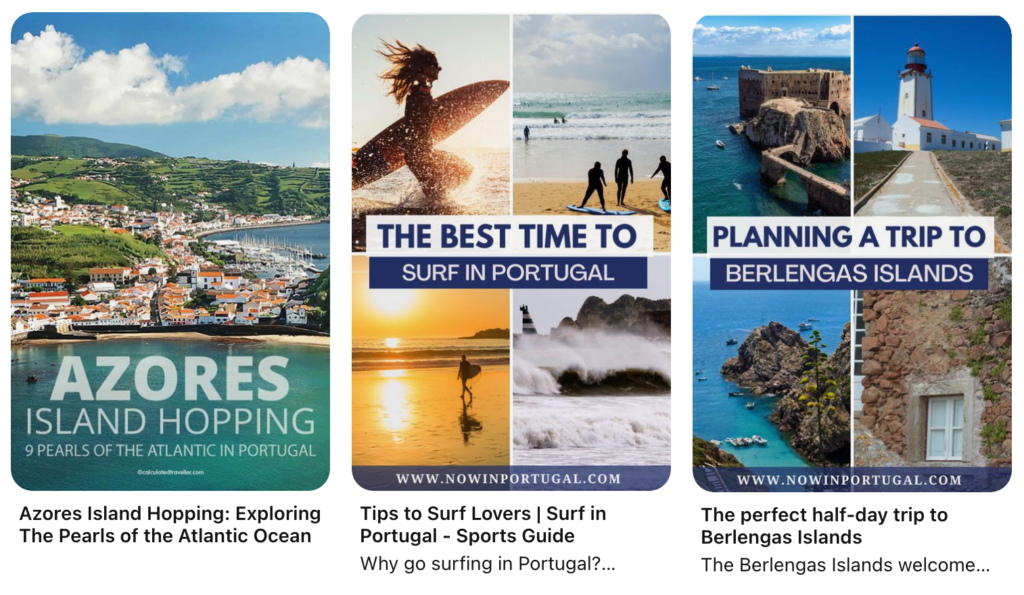
Visual appeal is key on Pinterest, a platform driven by imagery. To boost traffic to your travel blog:
- Analyze Popular Pins: Look at what successful travel bloggers are doing on Pinterest. Notice the styles, colors, and types of images that attract the most engagement. This analysis can guide the design of your own pins.
- Use Design Tools: Canva is an excellent tool for creating professional-looking pins effortlessly. It offers various templates optimized for Pinterest’s format, making producing attractive, engaging content easier.
- Consistency and Branding: Ensure your pins consistently reflect your travel blog’s branding with recognizable colors, fonts, and logos. This consistency helps increase brand recognition and follower loyalty over time.
Remember that you need to create curiosity with your pins. Pinterest is a visual social media platform. People will see hundreds of pins daily, so what makes yours stand out?
Christine Wheeler, Live Love Run Travel, Pinnovation Media
“Don’t be afraid to play with your blog titles (while keeping them accurate to the post) for the pins too. With your pins, make sure they are clean and easy to read. Make sure there is enough contrast between the text and the background, make sure the text is large enough to read on a mobile device when scrolling Pinterest, and make sure the fonts for your main words are easy to read (so Pinterest and users can easily read it).”

Another tip is to optimize your images to get more repins. For example, many Pinterest users use mobile phones, so are the words big enough to read on a smaller screen? Take all of this into consideration when creating your pins.
But what do bloggers do? Annie from Your Friend the Nomad uses a template created in Canva and adjusts it for each pin. She creates pins every few weeks and schedules them within Pinterest. But above all else, Annie ensures that her pins have a good look and make Pinterest users want to click.
3. Do Pinterest Keyword Research
Effective Pinterest keyword research helps ensure that your pins reach the most interested audience, driving more traffic to your travel blog.
Here’s how to get started:
- Start with Common Sense Keywords: Consider the simple, direct terms your audience might use to find content like yours on Pinterest. This includes straightforward descriptions without being overly clever or obscure.
- Use Pinterest’s Guided Search: This tool offers suggestions based on what users frequently search for. It’s a great way to discover related terms and expand your keyword list.
- Explore Pinterest Trends: This tool provides insights into what topics are trending over time and the related keywords gaining popularity. It’s useful for planning your content around rising trends to stay relevant and engaging.
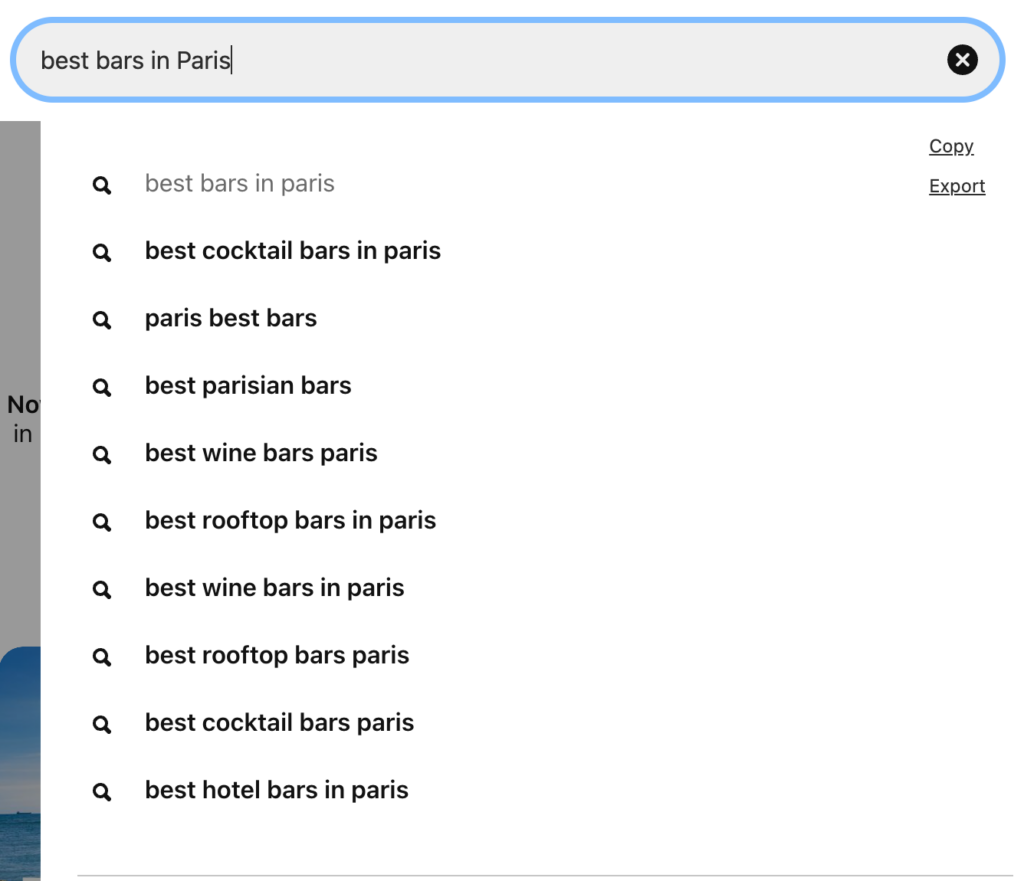
Annie Blay, Your Friend The Nomad
“Try out using Pinterest for planning your own trips — or if you don’t have an upcoming trip, pretend you are planning one and try to do it through Pinterest. This will give you an idea of what Pinterest users are looking for and how to create pins that appeal to them.”

4. Include Keywords in Your Pin Titles and Descriptions
Once you have your keywords, incorporating them into your pin titles and descriptions is crucial. Here’s how to optimize your pins:
- Strategic Keyword Placement: Include your main keywords in both the title and the description of your pins. This helps Pinterest understand and categorize your content more effectively.
- Balance Between Informative and Engaging: While it’s important to include keywords, your titles, and descriptions should also be compelling and informative to encourage clicks and engagement. Avoid keyword stuffing.
- Use High-Volume Keywords Sparingly: Focus on less competitive, niche-specific keywords relevant to your travel blog. This strategy can help you stand out more easily in search results. Wondering how to research keywords for a niche? We wrote a blog article about that, which you can read here.
Remember to include keywords in your:
- Your business name & profile
- Board titles and descriptions
- Pin descriptions (this includes hashtags)
- Image file names
- Body copy in the post
- Pin the URL of the post
5. Focus on an Eye-Catching Pin Title
Pinterest Pin titles function much like headlines, providing a brief yet compelling description of what the pin is about and why it should be clicked.
They are critical for attracting users and for Pinterest’s search indexing. Since pin titles can contain up to 100 characters, with only the first 40 characters typically visible on mobile devices, crafting them carefully is vital to acting as a “hook” for your intended audience.
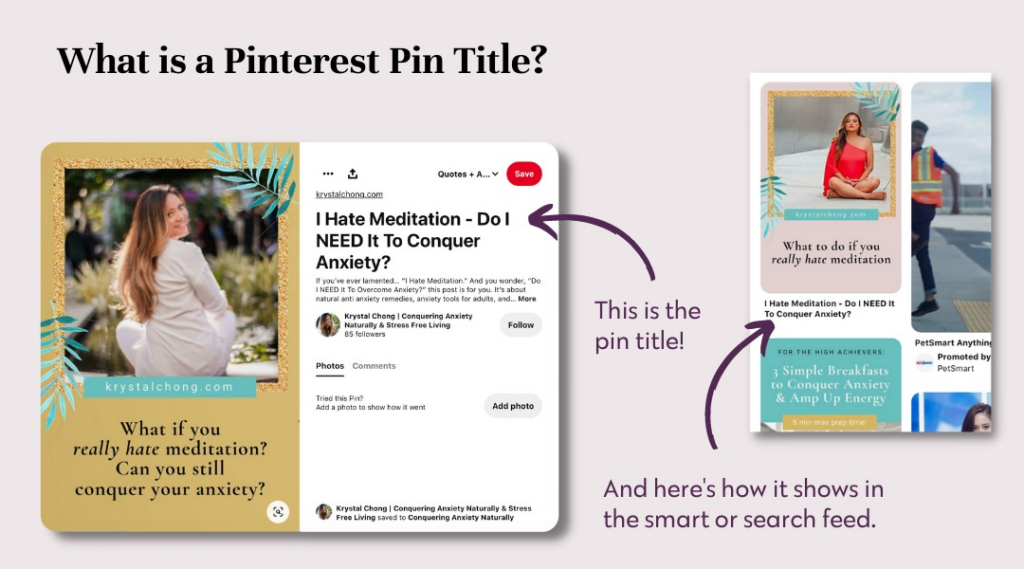
Adding at least one long-tail keyword to your pin title can significantly enhance your ability to rank within search results.
Wait, what is a long-tail keyword? It is a longer and more specific phrase, usually three words or more, often less competitive but highly targeted to an audience’s interests. For instance, instead of using a broad term like “travel tips,” a more effective long-tail keyword might be “budget travel tips for students.”
For more ideas on crafting effective Pinterest Pin titles that can captivate your audience, you might want to check out additional tips and strategies at this resource: Pinterest Pin Title Ideas
6. Create Rich Pins
Rich Pins are a type of Pinterest Pin that automatically syncs information from your website to your Pins, making them more useful and detailed.
For travel bloggers, applying for Rich Pins can enhance how your content is presented on Pinterest, as these Pins include updated details like the headline, author, and description directly from your site. This feature is invaluable for giving pinners a richer experience and can lead to higher engagement rates.

To start with Rich Pins, you must prepare your website with the appropriate metadata, validate your Rich Pins with Pinterest’s Rich Pin Validator, and apply them to enable your accounts.
7. Upload Videos
Given Pinterest’s reported 3x better viewability and 2x better video completion rate compared to other social media platforms, uploading video content can be a highly effective strategy for travel bloggers looking to engage their audience deeply.
Chantell Collins, Pin Advertising
“As you are a fan of creating video content, there’s definitely potential cross-over from Pinterest video Pins to TikToks and Instagram reels. As Pinterest is the higher website traffic driver, you may want to create for that platform first and then repurpose natively across to your second chosen platform. The types of content categories that will do well on both platforms are:
- Inspirational
- Educational
- Empowering”

According to Pinterest, users are happier to engage with video content actively, making it a prime format for sharing travel stories, tips, or destination highlights. Leveraging this format can maximize your content’s reach and impact on this visually-driven platform.
Best Pinterest Practices for Efficiency: Simplify Your Blogging Experience
To optimize your Pinterest strategy and make your work both easier and faster, here are some refined best practices incorporating your recent points:
- Optimal Pin Frequency: Pinterest’s algorithm now prioritizes high-quality and fresh content, making it more beneficial to focus on the novelty and relevance of your pins rather than sheer quantity.

Christine Wheeler, Live Love Run Travel, Pinnovation Media
“The idea is that there is NO magic number for Pinterest in terms of how many pins to pin each day. People get caught up in a system that says they need 15 pins a day, 5 pins a day, or 1 pin a day, but the exact number is not important and does not work for every account.
You want to look at how much content you have, how much content you are publishing, and how much time you have to pin/create pins.
I would suggest creating pins for each post in bulk just to save time, but you should not be pinning them all at once. Instead, use those to streamline your process so you aren’t constantly creating pins for the same post over and over again throughout the year.
I would start slower and then build up if you find you have a backlog of content. For example, if you are pinning 1 pin a day and constantly feel like you have a bunch of content piling up, increase it to 2-3 days. If that still feels like not enough, increase it again. Similarly, if you start with 10 a day and realize it’s too many, don’t force yourself to stick to that number – try lowering it by a few pins a day and see how that feels.”
- Avoid Duplicate Content: Do not pin the same pin to the same board more than once. Pinterest may flag this as duplicate content, and your account may be blocked.
- Use Scheduling Tools: Tools like Tailwind automate the pinning process, saving you time and ensuring your content is posted consistently without manual input daily.
- Pin to Relevant Boards First: Always prioritize pinning your content to the most relevant board first. For example, a pin about “Budget Travel Tips in Europe” should first be added to a “Europe Travel Tips” board rather than a more general “Global Adventures” board to ensure topic relevance and maximize engagement.
- Website Speed Optimization: Since most Pinterest traffic comes from mobile devices. Faster site speeds improve user experience, reduce bounce rates, and increase conversions. Still have speed questions? We answer them all in this article.
- Utilize Group Boards: Participate in group boards to increase the visibility of your pins across different audiences. Ensure these boards are relevant to your content to attract engaged traffic.
- Batch Process Pin Creation: Set aside specific times to create and organize your pins in batches. This can be more efficient than creating them sporadically.
- Analyze and Adjust: Use Pinterest Analytics to track which pins and what type of content perform best. Analyze trends and viewer engagement to refine your strategy, focusing more on what works best.
Christine Wheeler, Live Love Run Travel, Pinnovation Media
“Generally expect it to take at least 6 months if not closer to the 9 – 12 month range to really start to see pins perform well. Yes, pins can perform faster, but they are taking longer to rank than they used to prior to 2020.”

- Be Patient: as Annie from Your Friend The Nomad says: “It can take months for your pins to start showing near the top of search results on Pinterest. Be patient and expect your work today to reward you in a few months.”
Is It Worth It to Use Pinterest Traffic to Boost Your Travel Blog? Bloggers’ Opinions
Now that we’ve covered it all let’s look at some tips from travel bloggers that use Pinterest daily to drive travel to their websites. We asked them what is their tip about Pinterest that they would love to share with other travel bloggers. Here is what they said:

Annie Blay, Your Friend The Nomad
“In my experience, Pinterest is the second most valuable platform for generating organic traffic to a travel blog, only after search engines like Google. Investing time in Pinterest is worthwhile, but keep in mind that winning traffic is completely different from search engine optimization (SEO) for Google. Aesthetics are far more important on Pinterest, so making your pins visually appealing is essential. Meanwhile, aesthetics have little impact on whether or not people will click on your website in Google search results.”
Christine Wheeler, Live Love Run Travel, Pinnovation Media
“Pinterest has a high female US audience between 20 and 55. That means if your content doesn’t resonate with that audience, it won’t perform as well as other content that does. If you are pinning popular US destinations, those are more likely to do well than off-the-beaten-path destinations in Asia. The search volume isn’t the same due to the cost of traveling from the US to Asia.
Pinterest users love a good listicle or how-to type guide. They also love packing and what-to-wear-type posts for different destinations (and even different seasons in that destination), which makes it great for affiliate links for those types of posts. Research the platform to see what is trending for your niche (trends.Pinterest.com).
If your content targets other audiences, you’ll want to do some market research to see if your audience is on Pinterest. It can drive tens of thousands and even hundreds of thousands of clicks per month to your site, but it will take time, consistency, and the right type of content.”

Final Thoughts for Using Pinterest to Get Traffic to Your Travel Blog
As you harness Pinterest’s powerful platform to expand your travel blog’s reach, remember that collaborators can play a pivotal role in amplifying your visibility. Engaging with other creators boosts your content’s exposure and introduces your blog to diverse audiences, potentially increasing sales and client engagements.
Keep your pins interesting and rich with high-quality photos to captivate followers. Finally, consider how each pin can strategically drive traffic back to your site, encouraging readers to order services or products directly from you.
With the right approach, Pinterest can be more than just a visual haven. It can be a significant growth catalyst for your travel blog.

